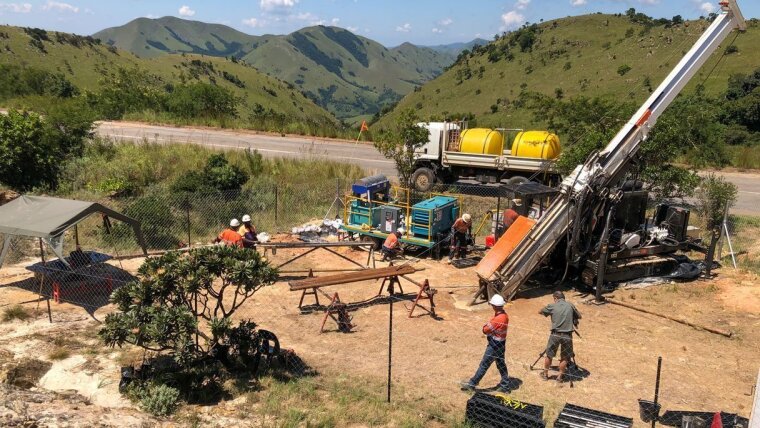
What is the significance of the Moodies group?
The evolutionary development of oxygenic photosynthesis is a key question in the study of early Earth, because it was and is responsible for the profound changes in surface environments on our planet and enabled the emergence of eukaryotic and complex multicellular life. Various geochemical evidences suggest that there were at least transient variations in the overall very low oxygen content in the atmosphere around ~3 Ga. This is consistent with the results of recent molecular clock analyses that suggest the onset of oxygenic photosynthesis before this time, probably by microbial consortia that included highly productive benthic cyanobacteria that colonized early coastal areas. The oldest strata suitable for testing the hypothesis of oxygenation, perhaps local and/or transient, are the ~3.2 billion year old sedimentary (and minor volcanic) units of the Moodies Group in the Barberton Greenstone Belt, South Africa. These record surface processes in very well preserved and correlatable fluvial-prodeltaic siliciclastic rocks; moreover, the ~3.7 km thick layers provide extremely high resolution (mean ~1 km/Ma) over a relatively short period of 1-14 Ma. Despite strong regional folding, the metamorphic grade is only lower greenschist facies, and there is almost no pervasive strain due to widespread early diagenetic silicification. As a result, numerous primary micro- and macrotextures are preserved. Mapping has documented paleosols, terrestrial evaporites, potentially eolian layers, riparian systems, tidal microbial mats, delta complexes, and marine ferruginous sediments/BIF. They provide a globally unique opportunity to reconstruct the processes and conditions of the early bio-geo-atmo-hydrosphere, particularly in the context of diverse and well-documented microbial life, at unprecedented regional and temporal resolution and during a critical period of Earth history. To avoid the effects of oxidative weathering, which is a particular problem in fine-grained strata, and to obtain continuous sections suitable for geochemical and time-series analyses, we propose to drill five key sections.
Eight inclined wells, each 280 - 497 m in length, were drilled Nov. 2021 to July 2022. They provide maximum information on a range of terrestrial and marine facies transitions. They were slabbed, photographed and described onsite. The archive half remains in South Africa, the working half has been shipped to the ICDP core repository in Berlin-Spandau. Research on the cores will start as soon as XRF scanning and overview probing has finished.
Why do we need scientific drilling?
Although the overall degree of metamorphism in the Moodies Group is low, several regional alteration events following deposition, deep burial, Cretaceous exhumation, and weathering have affected composition and texture at depth and near the surface. Therefore, only samples free of surface alteration can help distinguish between primary, diagenetic, and weathering effects.
Scientific objectives
We will (1) examine conformable terrestrial and marine transitions as environmental proxies; (2) examine diagnostic lithologies (such as paleosols, nearshore BIFs, evaporites, and basaltic lavas) for their ecological significance; (3) the composition, facies, and morphological variability of thick and laterally extensive microbial mats; and (4) sedimentary and mineralogical responses to surface variables such as tides, climate, possible meteorite impacts, and radiation, especially in deep-water.
Key questions include:
- What were the ecology, 3-D morphology, and metabolism of the abundant (oxygenic, photosynthetic?) microbial mats preserved in marginally compacted intertidal facies sandstones? Are these features recorded in their C isotope microstratigraphy? What were the preservation pathways, origins of the early diagenetic chert, and degree of thermal overprinting? Can we constrain net O2 production rates and the early N cycle?
- What is the (cyclo)stratigraphic and microfossil record of fine-grained marine and prodeltaic sediments? What is the origin of clay minerals? What is the relationship of nearshore BIFs and jaspilites to nearby microbial tidal mats? What does the magnetostratigraphic record tell us about the strength of the Paleoarchaean magnetic field?
- What global surface conditions can be inferred? What was the redox state (sulfate, redox-sensitive metal isotopes), temperature, and composition of ocean water, early diagenetic fluids, and the atmosphere?
- What can we infer about the role and importance of terrestrial weathering from proxies of physical and geochemical weathering, the composition of variable paleosols, the architecture of eolian strata, and the traces of evaporites and microbial metabolism in terrestrial sediments?
For more information, see the ICDP BASE-WebsiteExternal link or contact Prof. Heubeck. de









